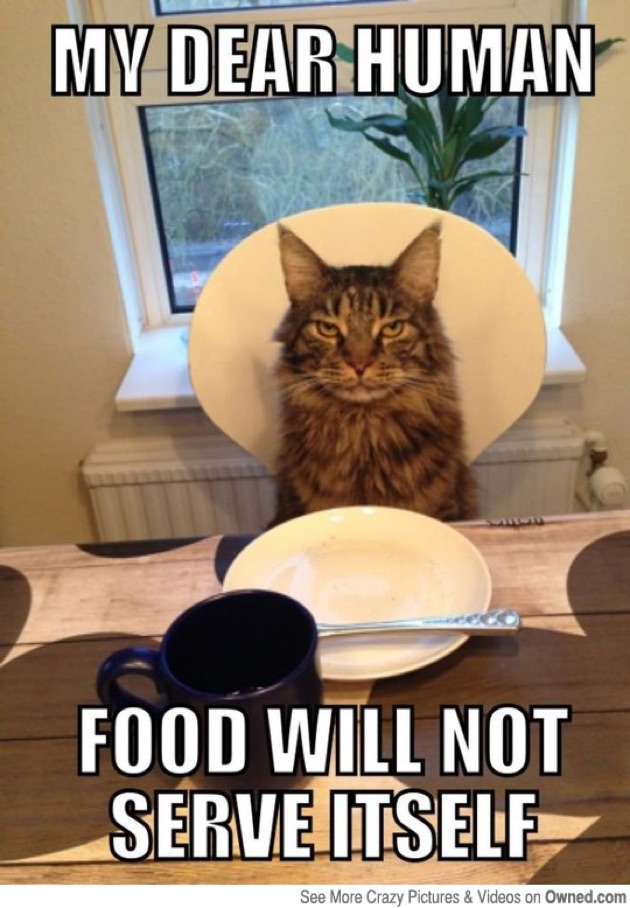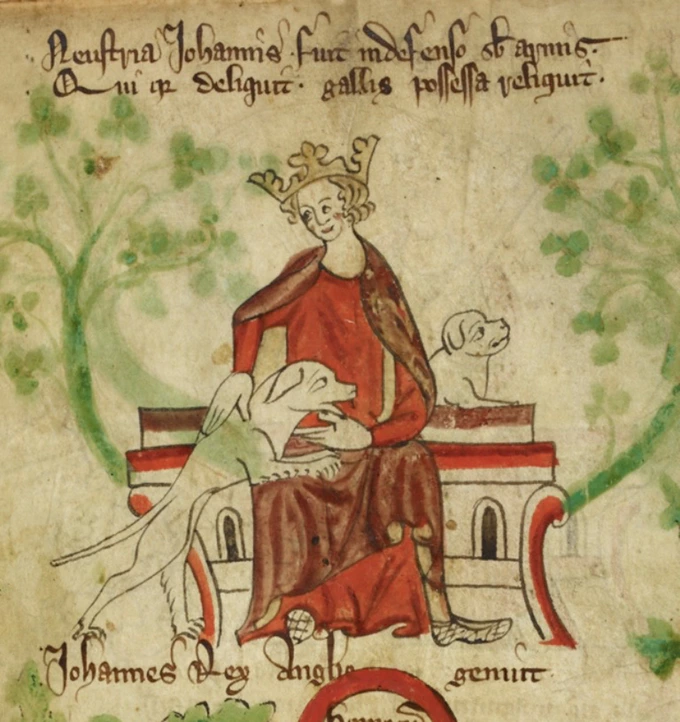I love adding animals to my stories. They make the characters seem more real, or maybe more relatable, and add a certain dimension to the world that I am creating on paper. In The Queen’s Almoner, Thomas has a favorite horse, Achaius, that makes several appearances, and Mary is given a white Clydesdale horse that becomes endeared to her (Clydesdales were a fairly new breed in the latter half of the sixteenth century, but they did exist). She names him Pureté. The queen is also given a small pup and names him TomTom (after the main character, of course!) TomTom only appears in two scenes, but I wanted to add a dog to the menagerie of animals in the book because the Queen of Scots was known to own a pup or two in her lifetime (a woman after my own heart, after all!) and legend has it that there was one hidden under her skirts when she was executed.
My next book goes a little further back in history to the medieval times of Henry II and Eleanor of Aquitaine (12th century). I wanted to add a small lap dog to my story, as a pet for Henry’s mistress, Rosamund. If you know anything about Henry II and Rosamund, you might know that hers is a not-so-happy ending. Therefore, I wanted her to have a small comfort in life in the form of a lovable pup. This made me wonder—did medieval people keep pets like we do now, and if so, what kind of pets did they keep?

The Purpose of a Pet
Animals have always played an important part in the lives of humans. The most obvious, and most common use has been as an important food source for ancient peoples who not only ate the meat, but used the skins, bones and even fat for everyday uses. However, a dead animal is not the only useful animal. Humans have used animals for hauling and heavy lifting, herding other animals, a means of transportation, hunting and providing protection.
According to Medieval Pets, by Kathleen Walker-Meikle the term “pet” is a relatively new word, not coming into popular use until the sixteenth century. The word, as we now use it refers to an animal that is kept for companionship or amusement. This type of animal is usually allowed access to parts of the home that other animals would not be allowed. In medieval times, such animals were not called pets. However, we do have evidence of animals living in close approximation with humans and being used for hunting, protection, and companionship, just as they are today.

Pets in Society
In medieval times, the type of pet you owned sometimes depended on whether you were a man or woman. Your vocation or social standing also dictated whether it was acceptable for you to own a certain type of pet. Depending on who you were might also determine your purpose for owning an animal and what you used it for.
Some of the most popular animals for men in the middle ages were, as you can image, the animals that would be useful in hunting, fighting and all the other manly things that men did in medieval times. Since women’s roles were vastly different from men’s in the middle ages, their choice of pet was usually for completely different reasons.
Types of Pets
Horses

Although not always thought of as pets, horses were very important to the medieval man. He relied heavily upon a good horse to quickly get him where he needed to go, and for assisting him in the hunt. Horses were also used for warfare. A good warhorse could stand as tall as 4-5 feet and must be strong enough to not only carry the man in armor and his weaponry, but they also needed to be able to bear the weight of their own protective gear. They were very expensive and were usually only owned by nobility or knights who could afford them.
Dogs

Dogs were another popular animal among men. Most dogs kept by men in medieval times were used for hunting. Large breed dogs, such as the wolfhound were popular, but they were not the only type of dog used in hunting. Mid-size and smaller breeds were useful in hunting as well. Just don’t expect to see them lying in their master’s lap later in the evening.
Women and clerics were also known to keep dogs. Small lap dogs were used more for companionship and loyalty and were popular with those that did not spend a lot of time outdoors (i.e. employees of the church and females). Opponents of pets felt that the practice of keeping dogs was a waste of time when women could have been doing something more beneficial with their time. However, ancient texts, manuscripts and art all indicate that dogs were a very popular pet to keep.
Cats

Cats are another animal that served more than one purpose. Medieval records indicate that cats were employed in many cathedrals for the purpose of keeping the churches clear of mice. And they truly were employees, in the sense that they were listed on the payroll and money was set aside in the budget to supplement their feeding if they didn’t catch enough mice.
Cats were companions as well, although at times, just as with dogs, it was considered frivolous to keep a cat as a pet. According to Dr. Mark Whelan, Lecturer in Medieval History at the University of Manchester, a cat was the one animal allowed to accompany the anchorites into their cellular seclusion. Anchorites were men and women who pledged to forsake all worldly possessions and commit to a life of solitude for the sake of religious service by being shut away in seclusion. Although pets were frowned upon in this way of life, one cat was permitted, should the anchorite find that seclusion was too hard to bear.
There is conflicting information about cats as pets in the Middle Ages, especially when it comes to religious leaders. Medievalist, Dr. Irina Metzler presents another side of cat ownership in medieval Europe. According to Dr. Metzler, many religious authorities viewed cats as tools of the devil. Their stealth and cunningness in mouse-catching was admired but are not qualities that are considered when choosing a good companion. Medieval people believed that animals were simply created by God to serve humans. The cat is not a creature that can be easily trained and shows no tendency toward loyalty. This lack of obedience caused the cat to become more associated with the devil. People became suspicious of cats and accused them of evil intent. Yet, many people preferred cats as pets and they still pop up in medieval literature and artwork like the stubborn little creatures that they are. Even modern cat owners will admit to you that their cat has them well trained and not the other way around.


15th century manuscript from Dubrovnik, Croatia. Proof that cats do what they want and cannot be trained. 😊
Photo credit: Emir O. Filipovic, July, 2011
One final thought about cats…
If you can’t tell, I am very amused at the thought that a lot of medieval people thought cats were the spawn of Satan. I like cats, I really do, but I do think they have a mind of their own and really are up to no good a lot of times. When I think of naughty cats, this video comes to mind…enjoy!
Birds

Birds are one of the most versatile animals kept in medieval times. They have served many purposes, some of which predate the Middle Ages by hundreds of years.

In the truest sense of the word “pet”, birds were kept for pleasure and for elaborate display. Songbirds such as those from the Canary Islands and parrots like those found in the New World were favorites among kings and queens and other people of wealth.
Yet birds have served in other capacities and have been more than just a pretty face or a lovely song. Birds like falcons and hawks were used in medieval times for hunting larger game such as ducks and herons. Pigeons (also known as doves in some texts), have a long-standing history of carrying messages, and the folks in the Middle Ages put them to good use for that very purpose as well.
To Each His Own

Badgers, weasels, ferrets, squirrels and even monkeys made for popular pets in the Middle Ages as well. As with most pets during the medieval time period, most of these animals would have been kept by royalty or those of wealth who had money to spare for feeding such exotic creatures.
In ancient manuscripts, animals are known to have held a symbolic meaning but many of the animals we see in these medieval texts were kept as pets. And if we didn’t already know that the medieval manuscript artists had a sense of humor, one would think that ferociously fighting bunnies were a popular pet as well. 😊

For further reading on this topic, I highly recommend Medieval Pets by Kathleen Walker-Meikle. Not only does she address the history of pets in the Middle Ages, but medieval pet care, acquisition, problems and much more.
Works Sited and Further Reading:
https://www.medievlists.net/2013/10/why-cats-were-hated-in-medieval-europe/
https://www.pigeoncontrolresourcecentre.org/html/the-pigeon-in-history.html



